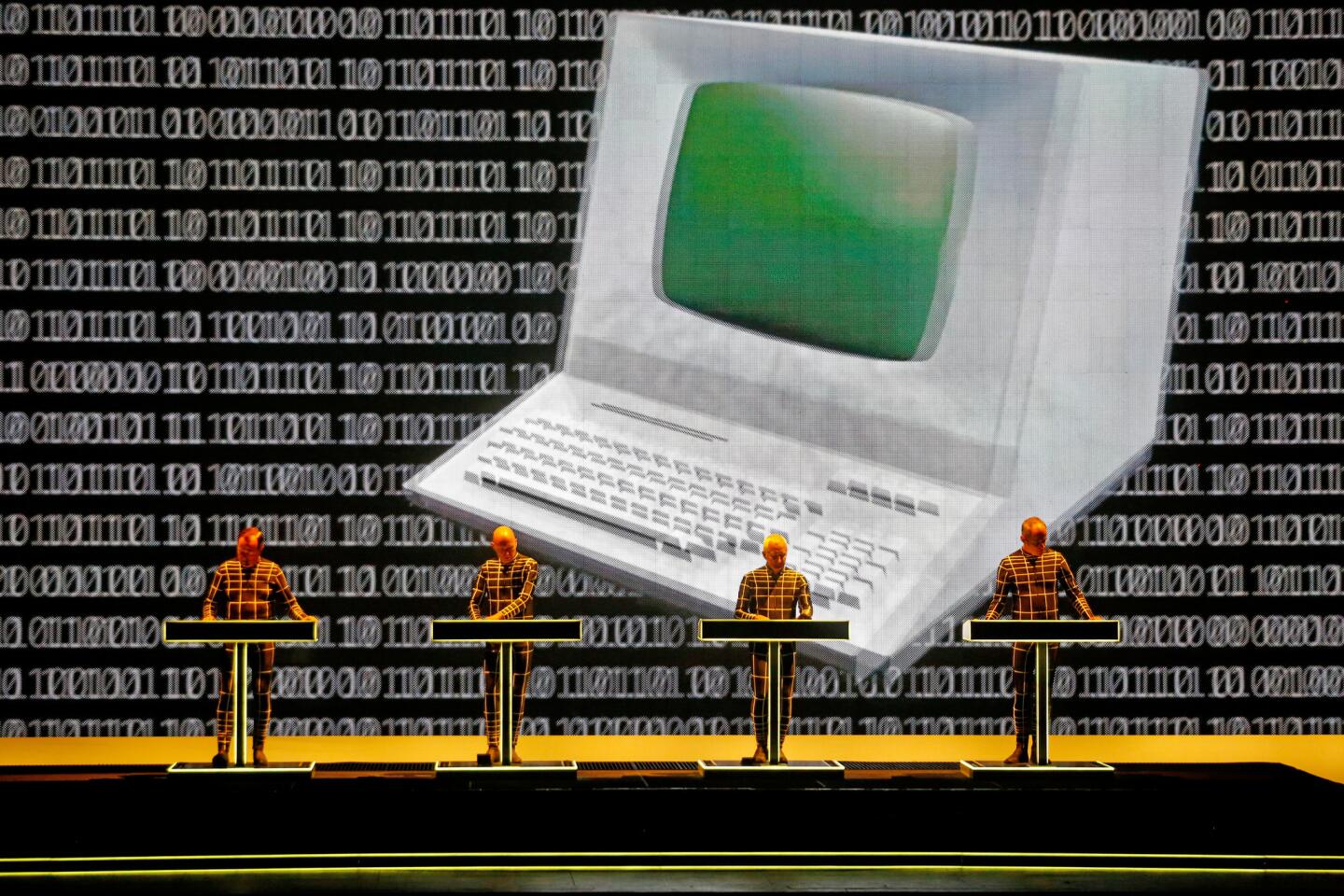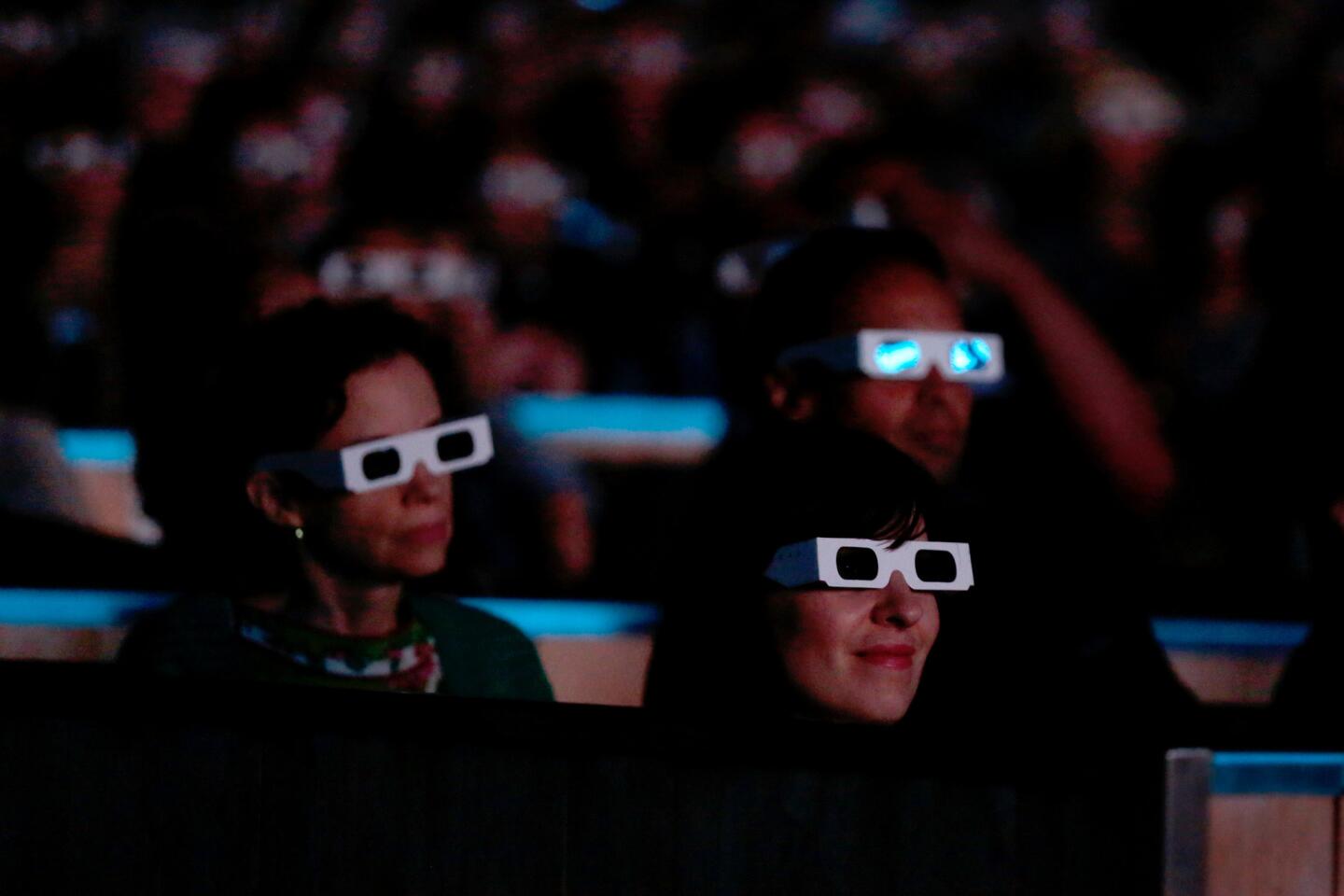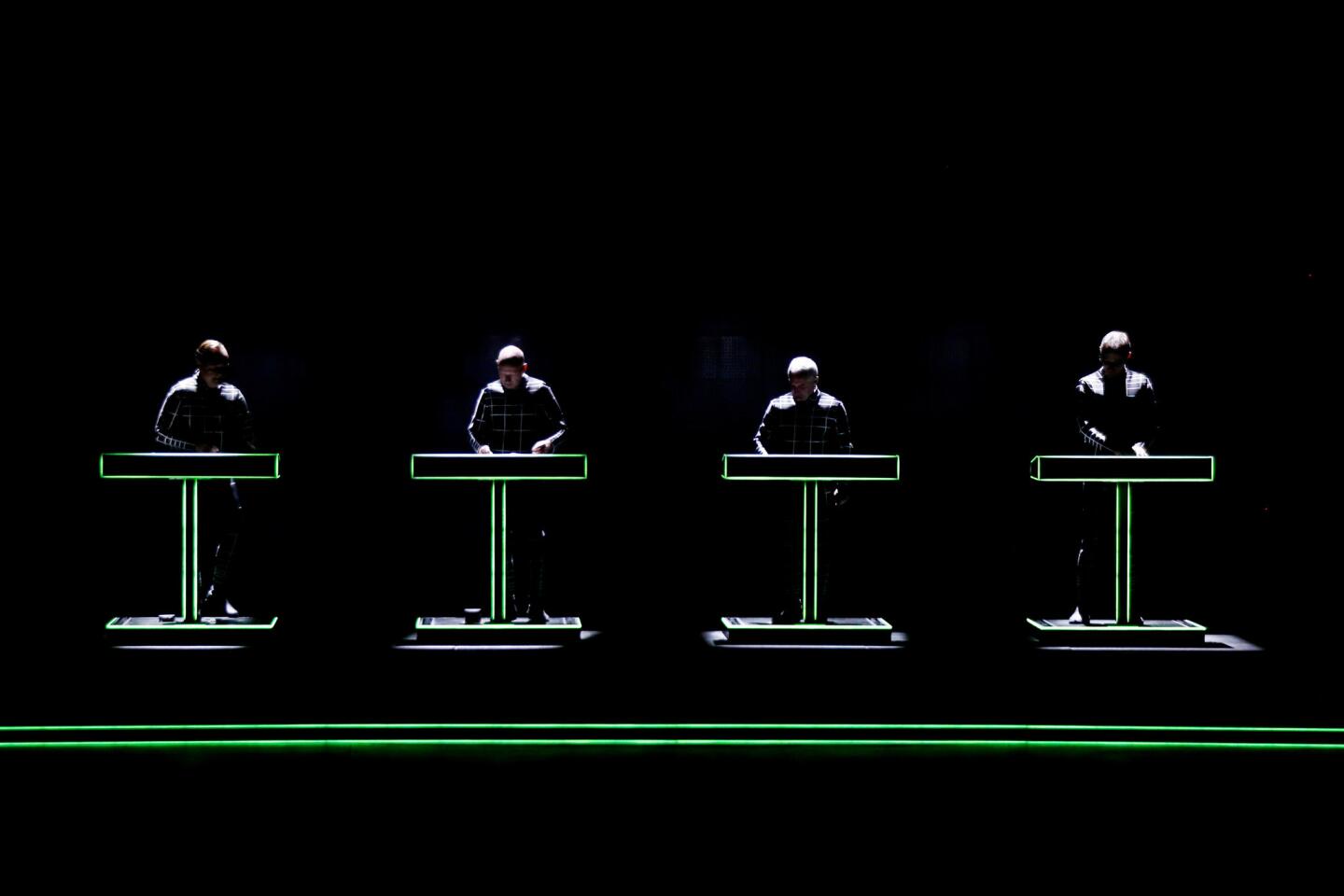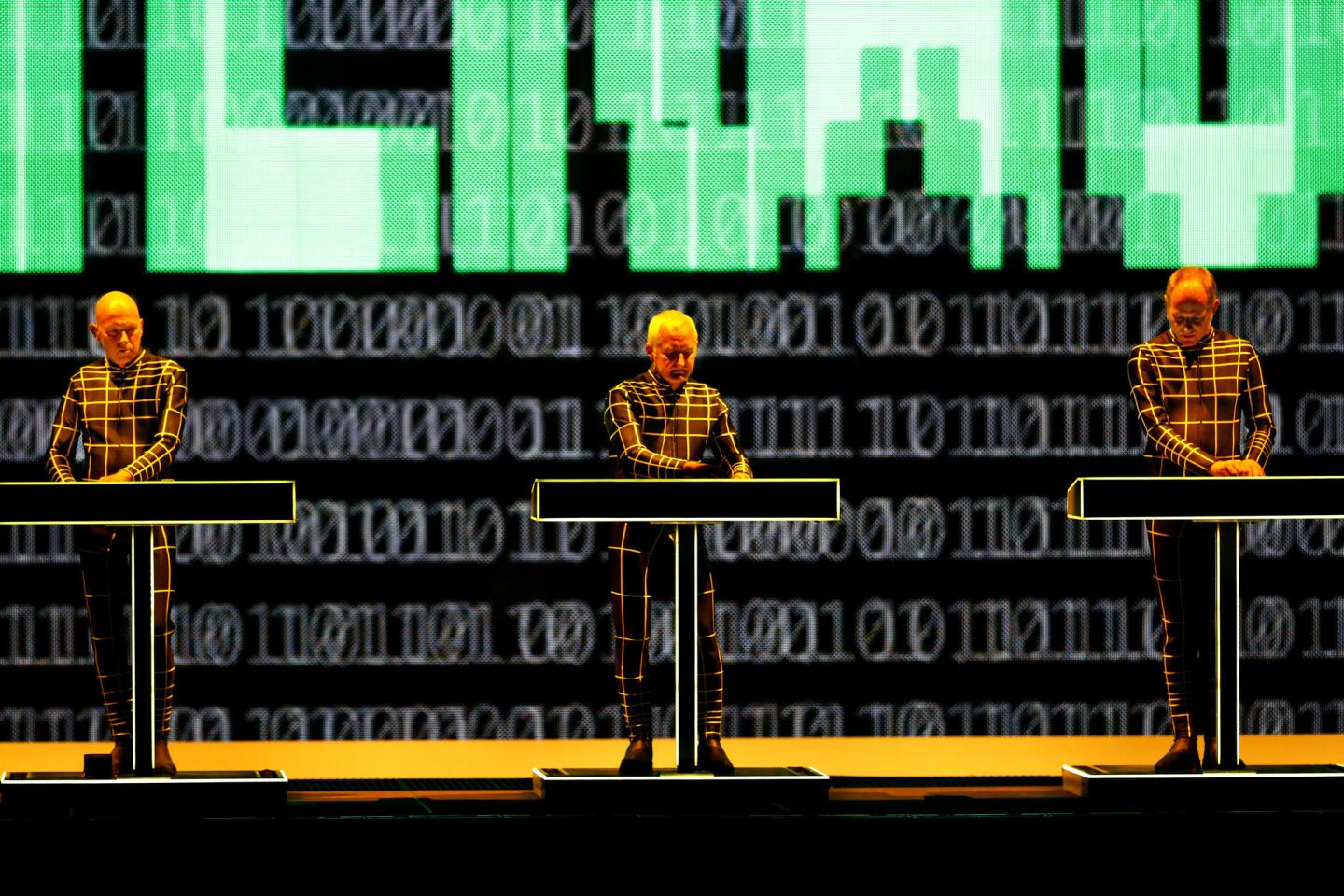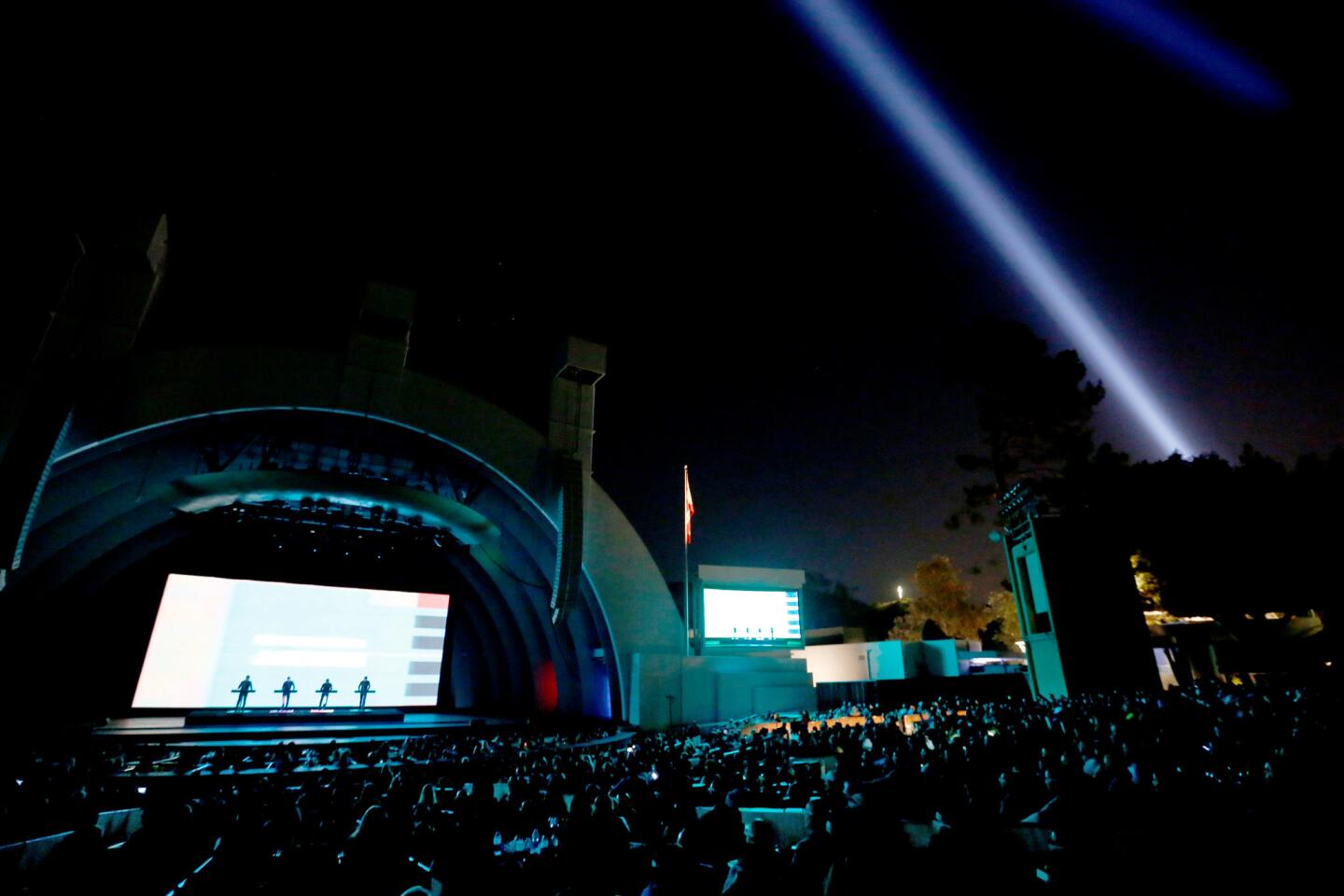Here come the robots: It’s still fun to compute with Kraftwerk in its Hollywood Bowl debut
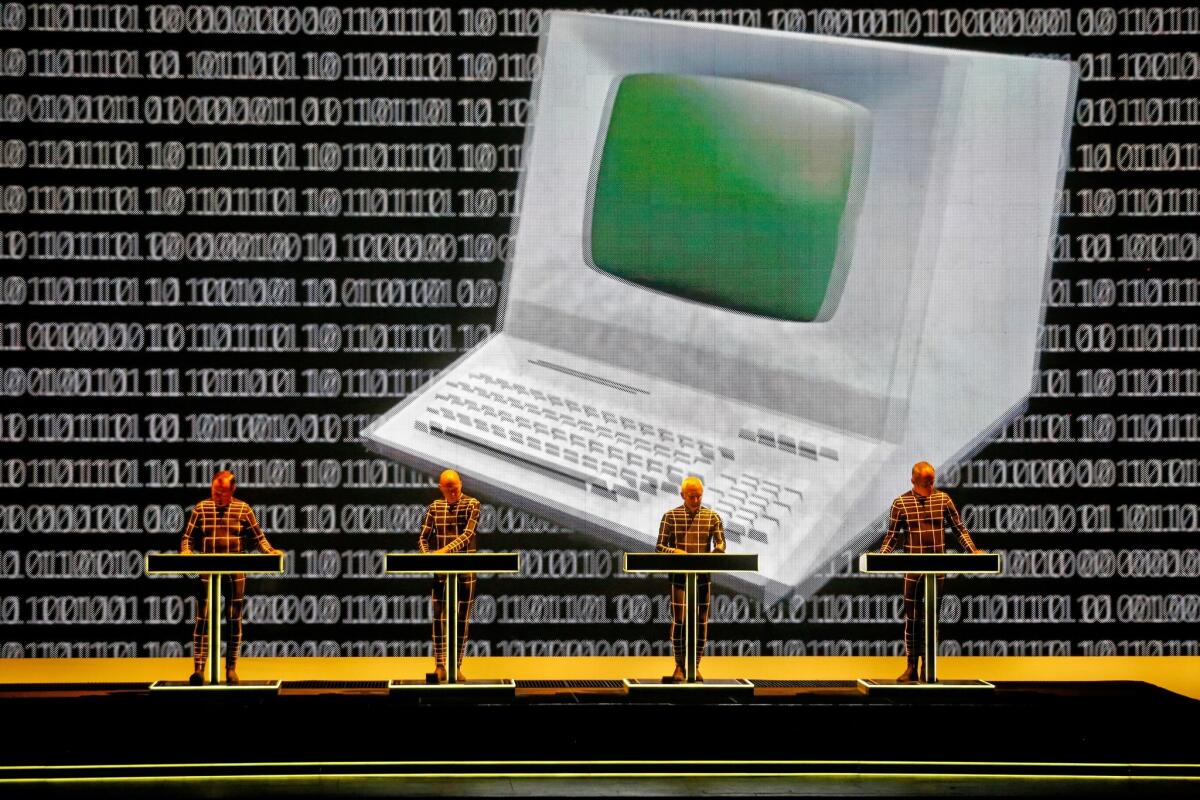
- Share via
Long before computers did in fact conquer the world, the influential German electronic group Kraftwerk calculated that probability, contemplating the changes to come by harnessing the latest musical gear and technology to create enduring work that soundtracked the birth of the Digital Age.
On Sunday night, the quartet made its Hollywood Bowl debut by offering an overview of its career, including the metronomic 1974 classic “Autobahn,” the menacing antinuke song “Radio-Activity,” the genre-defining electro classic “Trans-Europe Express,” the important synthesizer pop gems from the group’s album “Computer World” and more.
Mesmerizing to experience in the open air, the band looped bloops and beeps, thumps and bumps and sibilant fake high-hats to play songs once described by Detroit techno producer Carl Craig as “so stiff they were funky.”
The show was accompanied by 3-D visuals that locked image with music and required the 17,000-odd fans to don glasses, making the crowd seem teleported from an Atomic Age movie theater. The sight and sound presented a persuasive argument on the band’s enduring influence, even if it revealed the ways that, like the beige and boxy early-era personal computers, the march of time renders even the most innovative technological expressions obsolete.
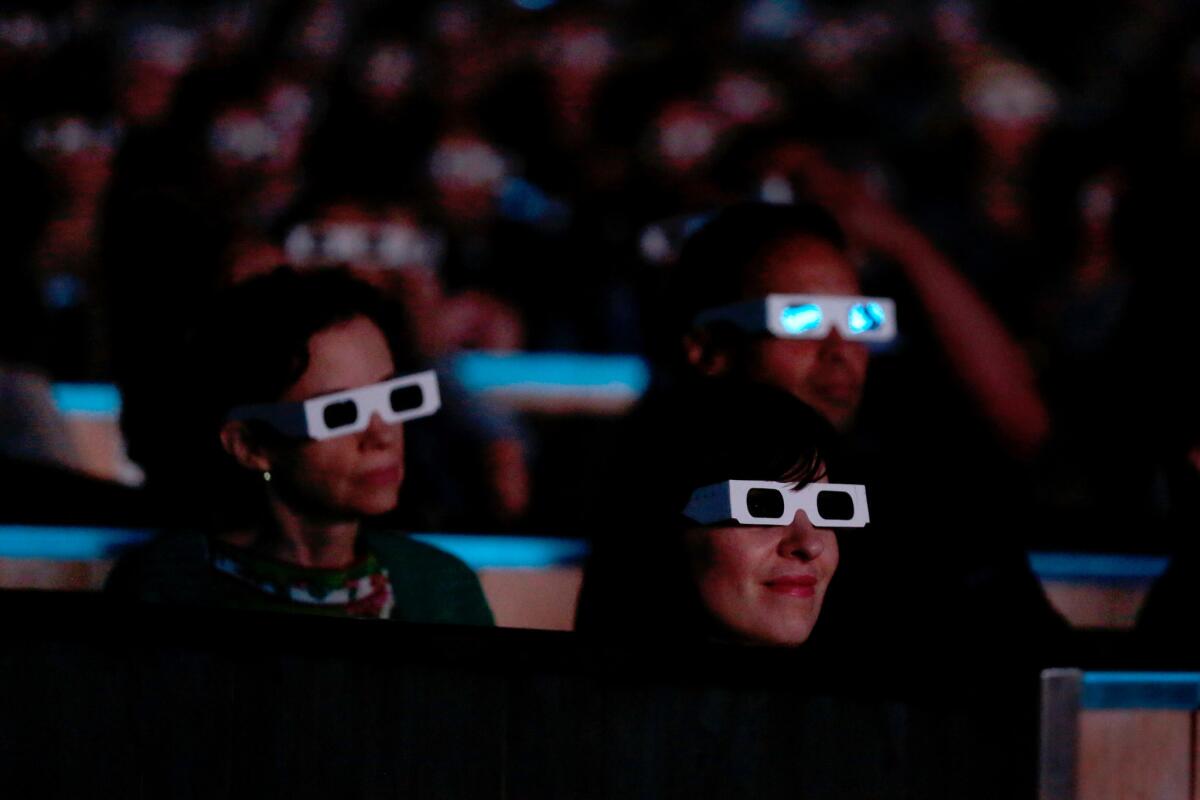
Founded by Ralf Hütter and Florian Schneider in 1969, Kraftwerk was born in postwar Düsseldorf, and through a series of landmark recordings influenced not only experimental electronic music but also New York rap, British synth-pop, Detroit techno and Chicago house music.
Basically, most of the beat-based music that over the years has evolved into the sound of contemporary pop culture owes some debt, however small, to a couple of Germans. (For context, its album “Trans-Europe Express” was composed during the same few months that Steve Jobs and Steve Wozniak launched Apple Computer.)
One gander at Kraftwerk’s WhoSampled page offers proof: Its work has been incorporated into songs by artists including Coldplay, Afrika Bambaataa, Aphex Twin, Miley Cyrus, LCD Soundsystem, Dr. Dre, Memphis Bleek, Ciara, Incubus, Will Smith and Milli Vanilli.
Kraftwerk circa 2016 features Hütter and three other knob-twiddling humans (Fritz Hilpert, Henning Schmitz and Falk Grieffenhagen), all of whom stood in a row, relatively motionless inside the Bowl’s shell. As a projection screen above offered computer-generated patterns, old film reels and vivid digital landscapes, the men worked identical consoles.
Each visual was synced with the music. The immersive experience at points featured passenger trains shooting into the crowd from the Bowl’s shell as the group’s ode to rail transportation, “Trans-Europe Express,” hummed along; PC-green numbers heaving in three dimensions during “Numbers”; a Volkswagen Bug and a Mercedes sedan shooting down the highway during “Autobahn”; and 1950s-era women posing for the cameras in “The Model.”
Kraftwerk influenced not only experimental electronic music but also New York rap, British synth-pop, Detroit techno and Chicago house music.
— Randall Roberts
Die-hard Kraftwerk fans experienced a complete presentation of this production at Walt Disney Concert Hall in 2014, when over four nights, Hütter and his replicants performed each of the group’s seminal albums. Though there was little, if anything, new about the performances as presented Sunday, Kraftwerk paced the show to offer glimpses of its progression in vaguely chronological order.
At its best, Kraftwerk merged memorable pop melodies and minimalist lyrics to connect verbal and sonic circuitry.
“It’s more fun to compute,” Hütter sang during “Home Computer,” its 1981 love letter to the coming revolution, repeating the line as though it were an old 12-bar blues ballad. “I program my home computer / Beam myself into the future.”
During “Neon Lights,” Hütter sang of a city “made of light,” connecting electricity and humanity through an ode to cosmopolitan power grids. “Tour de France,” the group’s massive 1983 dance-floor hit, reveled in the glory of Hütter’s nonmusical obsession, cycling.
As is inevitable, though, technology has rendered the tones of Kraftwerk’s classic works anachronistic. As processing power has expanded, sounds that at the time were state of the art felt quaint, of a particular time and place.
Dozens of operating systems later, though, these obsolete notes and rhythms endure because they were built on a miraculously stable platform, one whose ideas continue to resonate because crucial questions Hütter and Schneider asked all those decades ago have yet to be answered.
There’s a lot of terrible music out there. For tips on the stuff that’s not, follow Randall Roberts on Twitter: @liledit
What makes for a No. 1 album in the age of streaming?
California Sounds: New music by Zack de la Rocha, Kim Gordon and M. Geddes Gengras
On its third album, ‘Sunlit Youth,’ Local Natives moves toward the center without compromising
More to Read
The biggest entertainment stories
Get our big stories about Hollywood, film, television, music, arts, culture and more right in your inbox as soon as they publish.
You may occasionally receive promotional content from the Los Angeles Times.
